Inbound travelers from today are allowed to drive to a quarantine location in their own vehicle, the Central Epidemic Command Center (CECC) announced yesterday.
The inbound traveler cap last week was expanded to 50,000 per week because of increased travel demand, which prompted yesterday’s announcement, it said.
Civil Aeronautics Administration Deputy Director-General Fang Chih-wen (方志文) said that major airports would have designated parking areas for people to park private vehicles and signs at terminals would indicate the location of the parking areas.
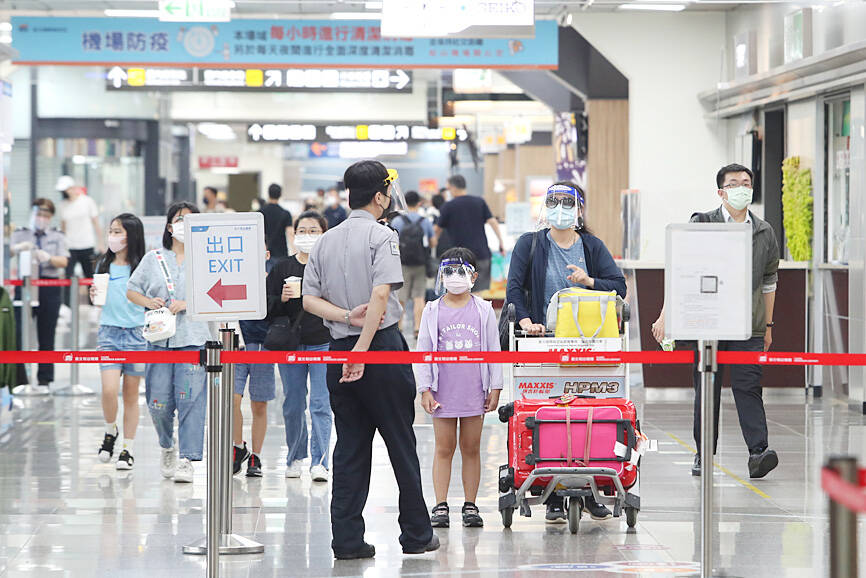
Photo: CNA
The parking areas at Taiwan Taoyuan International Airport are Terminal 1’s No. 2 lot and Terminal 2’s No. 4 lot; at Taipei International Airport (Songshan airport) they are the Nos. 1 and 2 outdoor lots; at Kaohsiung’s Hsiaokang International Airport they are sections C and D of the lot in front of the international terminal; and at Taichung Airport it is the B1 lot, Fang said.
People should check with their quarantine hotel whether it has parking spaces designated for inbound travelers entering quarantine before driving their own vehicle, he said, adding that vehicles may not be hired to transport people from an airport to a quarantine site.
Masks must be worn throughout the drive to the quarantine location and people should disinfect their hands before paying parking fees, he said, adding that no stops are permitted before reaching the quarantine location and no meetings with other people are allowed.
Arriving travelers are recommended to disinfect the inside and outside of their vehicle, especially wiping the door handles, steering wheel, seats, seatbelts and luggage storage areas, when they arrive at the quarantine location, Fang said.
Airport personnel would wear protective equipment and boost environmental disinfection procedures, he added.
Also starting from today, inbound travelers can return home for the four-day self-disease prevention period, as long as they follow the “one person per room” principle, the CECC said, adding that if they stay in a hotel for this period, it must be a quarantine hotel.
Deputy Minister of Health and Welfare Victor Wang (王必勝), who heads the CECC, said that inbound travelers are still subject to the “3+4” quarantine policy — three days of quarantine followed by four days of self-disease prevention.
The inbound traveler cap might be increased further if the rate of those who spend the self-disease prevention period at home rises, which would free up quarantine hotel capacity, and if airport capacity and COVID-19 testing capacity are sufficient, Wang said.
Meanwhile, the fifth round of the real-name-based COVID-19 rapid test kit purchasing program begins today, the CECC said.
With the fast-spreading Omicron BA.5 subvariant of SARS-CoV-2 becoming more prevalent, school semesters starting and the Mid-Autumn Festival long weekend approaching, the risk of local community spread of COVID-19 is expected to increase, so demand for at-home rapid test kits is also expected to rise, it said.
From today, people can buy a maximum of two packs — with five-kit packs costing NT$500 each — in each round, Wang said, adding that the two packs can be purchased at once or separately.
People can also purchase packs for others by showing their National Health Insurance (NHI) card or residence permit, he said.
There are 4,539 NHI-contracted pharmacies across the nation and 79 public health centers in remote areas that sell the packs, he said.
The third round of free rapid test kits for children born on Sept. 2, 2015, or after started on Aug. 15, so those who have not picked up a free pack can still receive them at the pharmacies and public health centers, he added.
People born in 1957 or earlier are also be eligible for an additional free pack from today, he said.
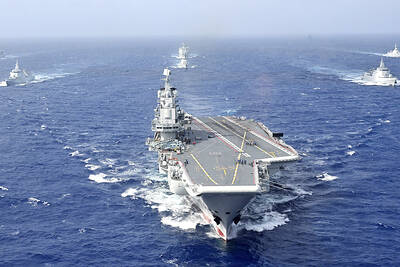
A Chinese aircraft carrier group entered Japan’s economic waters over the weekend, before exiting to conduct drills involving fighter jets, the Japanese Ministry of Defense said yesterday. The Liaoning aircraft carrier, two missile destroyers and one fast combat supply ship sailed about 300km southwest of Japan’s easternmost island of Minamitori on Saturday, a ministry statement said. It was the first time a Chinese aircraft carrier had entered that part of Japan’s exclusive economic zone (EEZ), a ministry spokesman said. “We think the Chinese military is trying to improve its operational capability and ability to conduct operations in distant areas,” the spokesman said. China’s growing
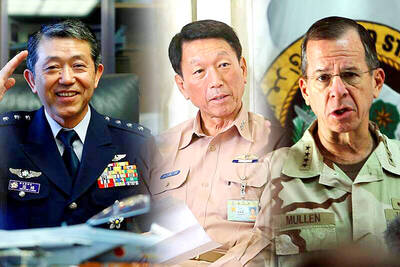
Nine retired generals from Taiwan, Japan and the US have been invited to participate in a tabletop exercise hosted by the Taipei School of Economics and Political Science Foundation tomorrow and Wednesday that simulates a potential Chinese invasion of Taiwan in 2030, the foundation said yesterday. The five retired Taiwanese generals would include retired admiral Lee Hsi-min (李喜明), joined by retired US Navy admiral Michael Mullen and former chief of staff of the Japan Self-Defense Forces general Shigeru Iwasaki, it said. The simulation aims to offer strategic insights into regional security and peace in the Taiwan Strait, it added. Foundation chair Huang Huang-hsiung
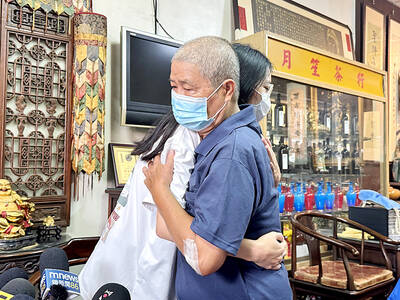
PUBLIC WARNING: The two students had been tricked into going to Hong Kong for a ‘high-paying’ job, which sent them to a scam center in Cambodia Police warned the public not to trust job advertisements touting high pay abroad following the return of two college students over the weekend who had been trafficked and forced to work at a cyberscam center in Cambodia. The two victims, surnamed Lee (李), 18, and Lin (林), 19, were interviewed by police after landing in Taiwan on Saturday. Taichung’s Chingshui Police Precinct said in a statement yesterday that the two students are good friends, and Lin had suspended her studies after seeing the ad promising good pay to work in Hong Kong. Lee’s grandfather on Thursday reported to police that Lee had sent
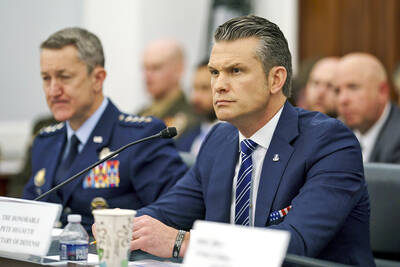
BUILDUP: US General Dan Caine said Chinese military maneuvers are not routine exercises, but instead are ‘rehearsals for a forced unification’ with Taiwan China poses an increasingly aggressive threat to the US and deterring Beijing is the Pentagon’s top regional priority amid its rapid military buildup and invasion drills near Taiwan, US Secretary of Defense Pete Hegseth said on Tuesday. “Our pacing threat is communist China,” Hegseth told the US House of Representatives Appropriations Subcommittee on Defense during an oversight hearing with US General Dan Caine, chairman of the Joint Chiefs of Staff. “Beijing is preparing for war in the Indo-Pacific as part of its broader strategy to dominate that region and then the world,” Hegseth said, adding that if it succeeds, it could derail